Issue Archive
Table of Contents
BLOOD COMMENTARIES
PLENARY PAPER
Platelet EVs contain an active proteasome involved in protein processing for antigen presentation via MHC-I molecules
Our understanding of the nonhemostatic functions of platelets continues to expand. In a Plenary Paper, Marcoux et al demonstrate that a subset of platelet extracellular vesicles (PEVs) that are released upon platelet activation contain a functioning proteasome which can process and present antigen in the context of major histocompatibility complex class I to activate T cells, suggesting that they modulate adaptive immunity through antigen presentation. Because of their small size, they can distribute widely and may contribute to immune responses and autoimmunity.
REVIEW ARTICLE
Understanding CLL biology through mouse models of human genetics
Studies of the pathogenesis of chronic lymphocytic leukemia (CLL) have been hampered by disease heterogeneity, the limited number of CLL cell lines, and the difficulty in manipulating primary B cells to express potential driver genes of interest. In a definitive review, ten Hacken and Wu describe the contribution of mouse models to study the pathogenesis and treatment of CLL, where genetic strategies allow modeling the full range of CLL phenotypes from indolent to transformed disease.
CLINICAL TRIALS AND OBSERVATIONS
Phase 1a/b study of monoclonal antibody CAEL-101 (11-1F4) in patients with AL amyloidosis
Clinical Trials & Observations
While current chemoimmunotherapy of AL amyloidosis has improved hematologic response and survival, amyloid fibril deposition in the heart and kidneys may persist. Edwards et al report promising phase 1a/b trial results with treatment with CAEL-101, an antibody directed against amyloid fibrils, in improving organ function in treated patients with a deep hematologic response but inadequate cardiac and renal recovery. If confirmed in phase 2 and 3 trials, this supports a combined approach to AL amyloidosis that targets the underlying B-cell clone and the amyloid deposits simultaneously.
HEMATOPOIESIS AND STEM CELLS
IMMUNOBIOLOGY AND IMMUNOTHERAPY
Targeting intracellular WT1 in AML with a novel RMF-peptide-MHC-specific T-cell bispecific antibody
Antibodies targeting chemoresistant cells can successfully treat lymphoid malignancy. However, targeting surface antigens in acute myeloid leukemia (AML) is difficult, since most antigens are also expressed on normal stem cells. Augsberger et al describe a novel bispecific antibody targeting CDɛ and Wilms’ tumor 1 (WT1), an intracellular protein that is expressed in <1% of bone marrow cells. Using a bivalent T-cell receptor–like binding domain that recognizes processed surface WT1 antigen in the context of (HLA) A*02, this molecule kills AML cell lines and primary cells ex vivo and in vivo.
LYMPHOID NEOPLASIA
Low-burden TP53 mutations in CLL: clinical impact and clonal evolution within the context of different treatment options
Clinical Trials & Observations
Patients with chronic lymphocytic leukemia (CLL) with TP53 mutations with a >10% variant allele frequency (VAF) are often refractory to chemotherapy and benefit from targeted therapy. Malcikova and colleagues correlated TP53 mutations with <10% VAF with clinical outcomes. Low-level TP53 mutations also have a negative association with survival, with data suggesting that chemotherapy, but not targeted therapy, enables clonal expansion of TP53-mutant clones. If confirmed in prospective studies, this suggests that low-burden TP53-mutant CLL should be considered for up-front targeted therapy.
Epidemiological landscape of young patients with multiple myeloma diagnosed before 40 years of age: the French experience
Clinical Trials & Observations
Less than 2% of patients with multiple myeloma (MM) present before the age of 40 years. Caulier et al report the epidemiology of 214 young patients (age <40) diagnosed with MM between 2000 and 2015. The median overall survival is 14.5 years, representing extended survival but markedly reduced life expectancy. The ongoing development of novel immunotherapies should allow further improvements in outcomes for this population of young patients.
MYELOID NEOPLASIA
Novel NPM1 exon 5 mutations and gene fusions leading to aberrant cytoplasmic nucleophosmin in AML
Brief Report
PHAGOCYTES, GRANULOCYTES, AND MYELOPOIESIS
Gasdermin D inhibition prevents multiple organ dysfunction during sepsis by blocking NET formation
Although neutrophils are critical in the response to bacterial sepsis, excessive neutrophil activation and neutrophil extracellular trap (NET) formation can contribute to organ failure. Silva et al report that during sepsis, the pore-forming protein gasdermin D promotes NET release. Disulfiram inhibits gasdermin D and reduces organ dysfunction and lethality in sepsis, suggesting a new role for an old drug as a treatment for sepsis.
THROMBOSIS AND HEMOSTASIS
LETTERS TO BLOOD
Complex karyotype in unfit patients with CLL treated with ibrutinib and rituximab: the GIMEMA LLC1114 phase 2 study
Clinical Trials & Observations
BLOOD WORK
-
Cover Image
Cover Image
![issue cover]()
Hematoxylin-and-eosin stain of a lung from a C57BL/6J mouse collected at 3 hours after a severe traumatic brain injury. The image shows the extensive accumulation of red blood cells in the alveolar spaces of the lung and frequent capillary dilation, indicating significant secondary pulmonary sequelae. See the article by Dong et al on page 2714.
- PDF Icon Front MatterFront Matter
- PDF Icon Table of ContentsTable of Contents
- PDF Icon Back MatterBack Matter
- PDF Icon Editorial BoardEditorial Board
Advertisement intended for health care professionals
Email alerts
Advertisement intended for health care professionals





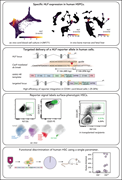
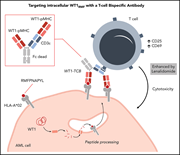
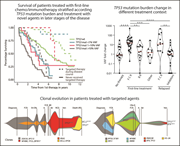
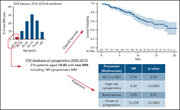
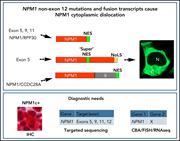
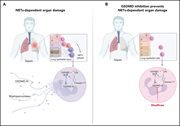
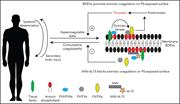

Prime suspects: cross-presenting platelet EVs